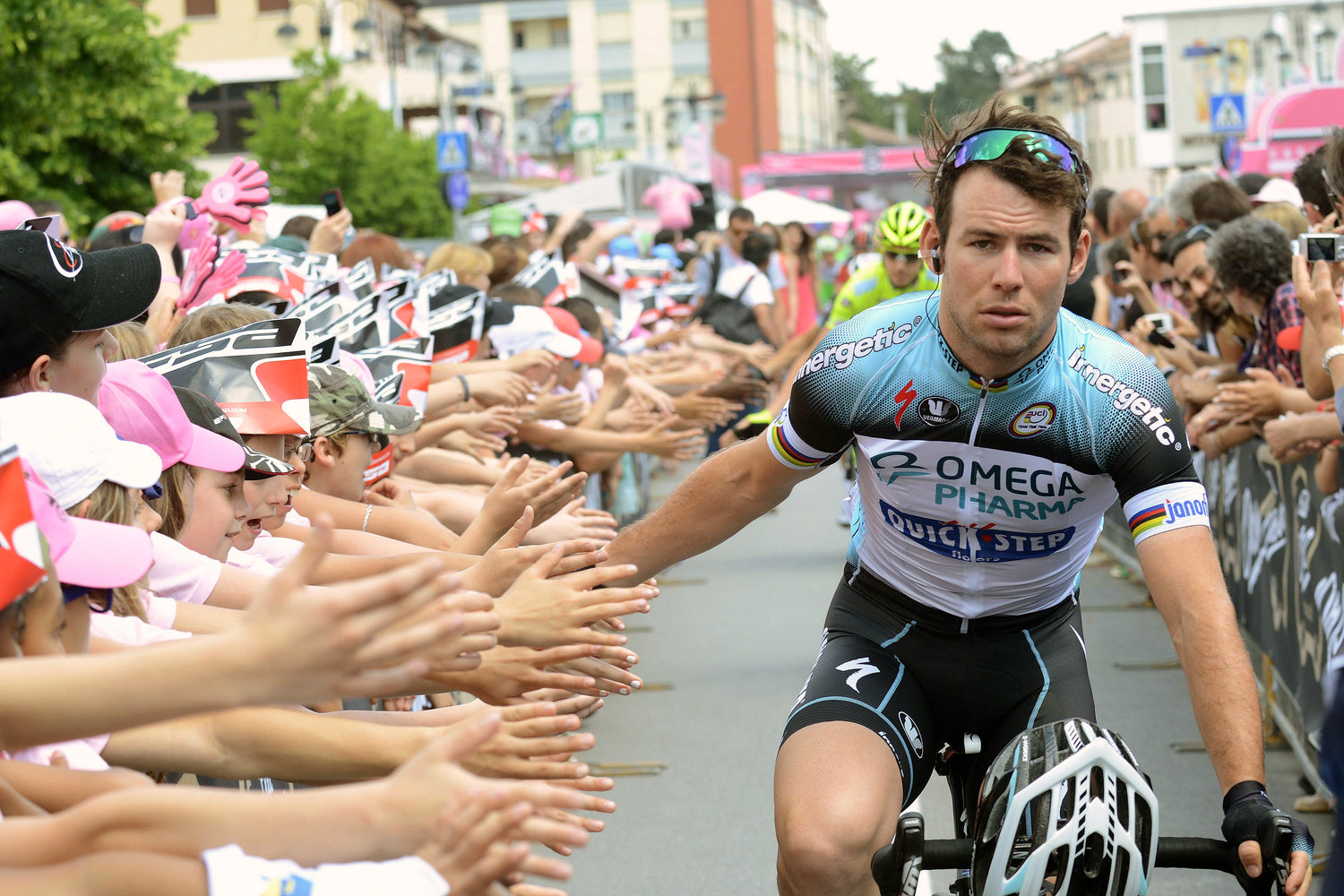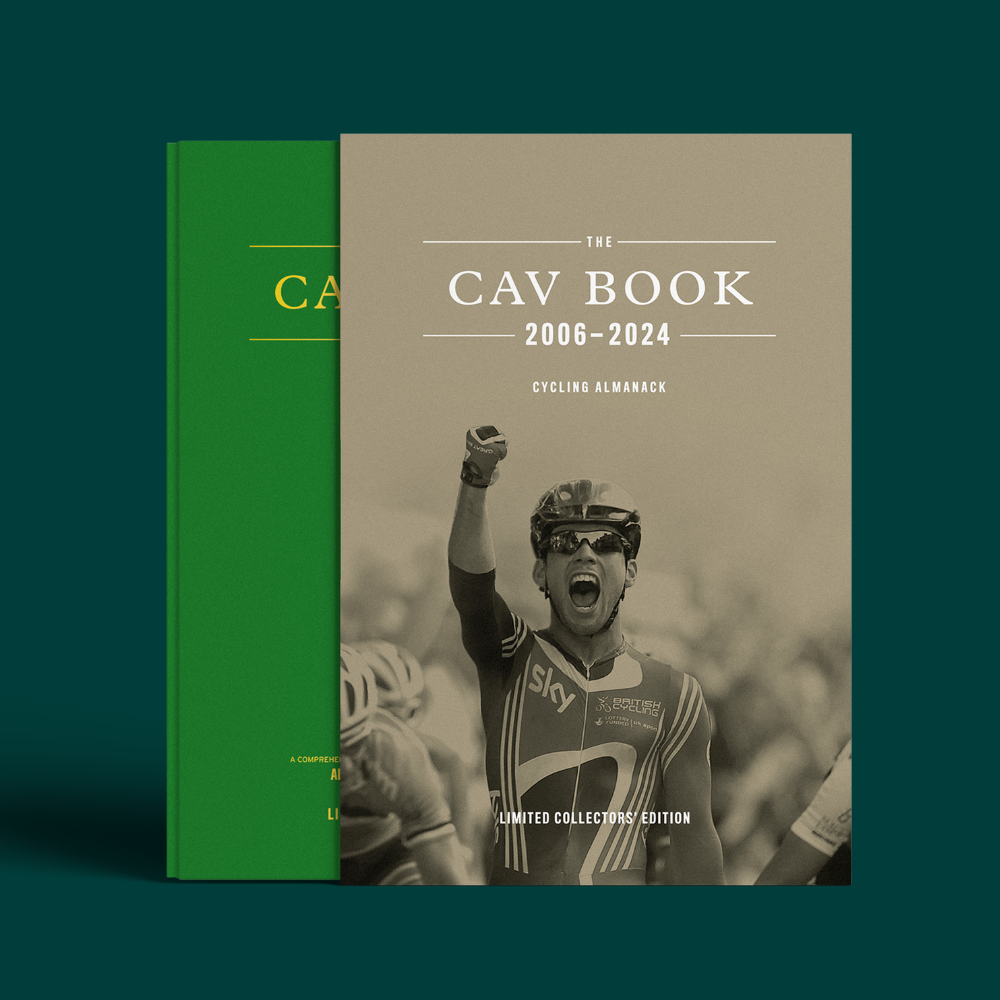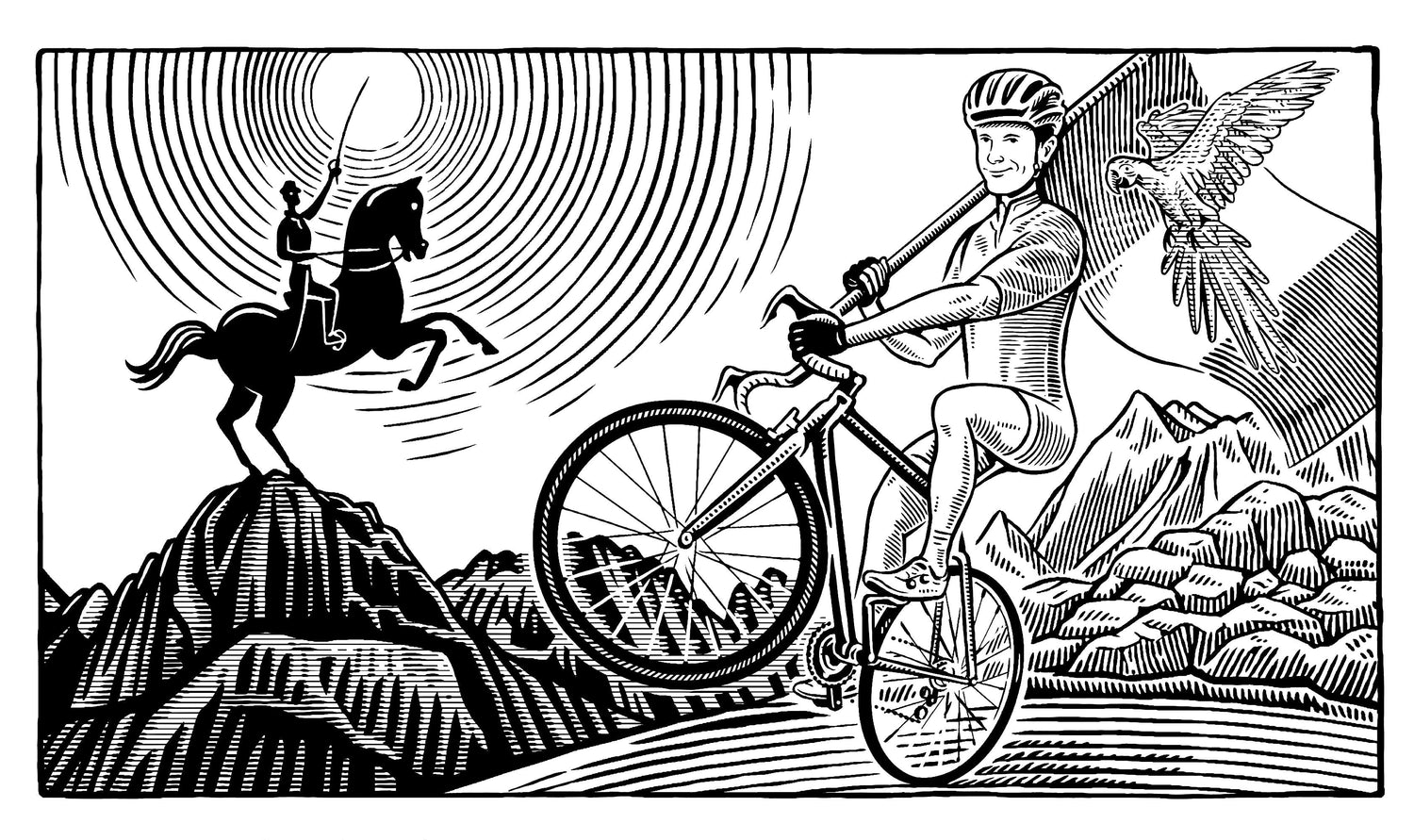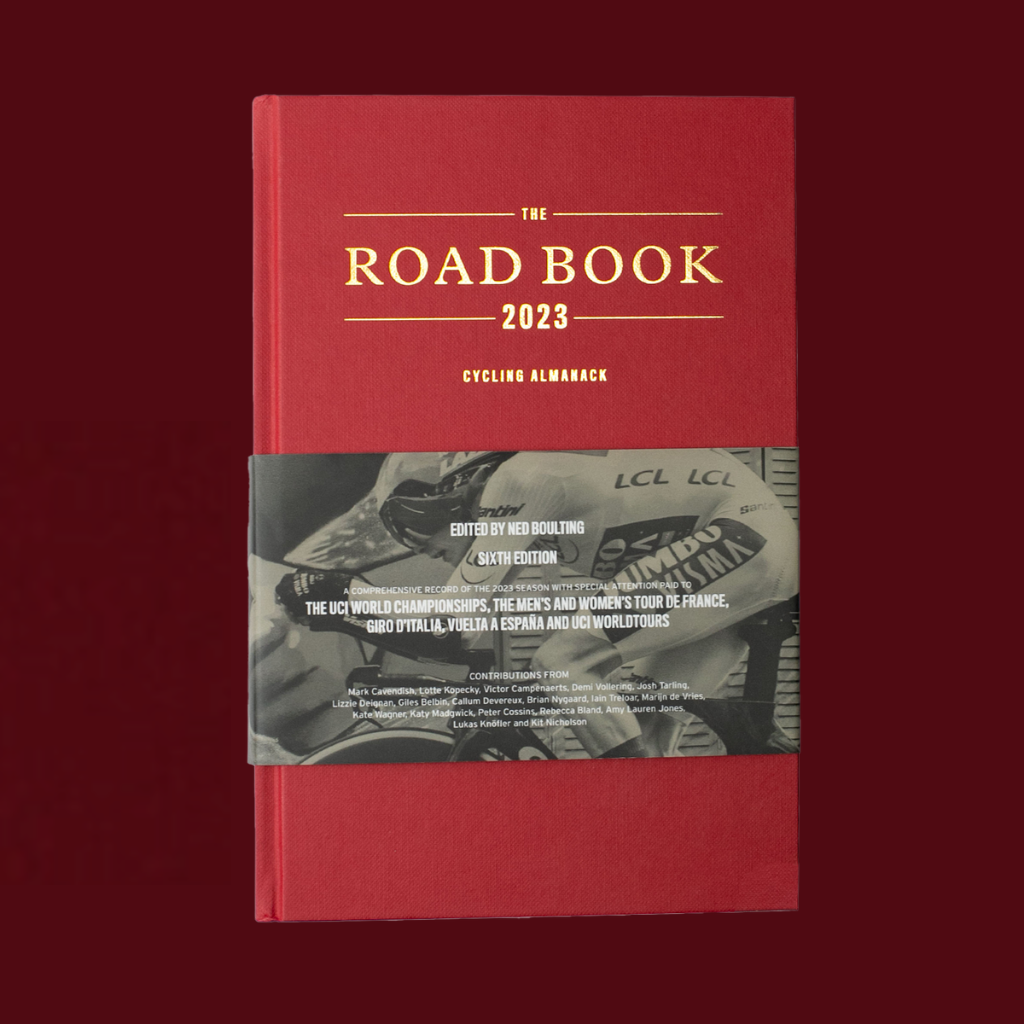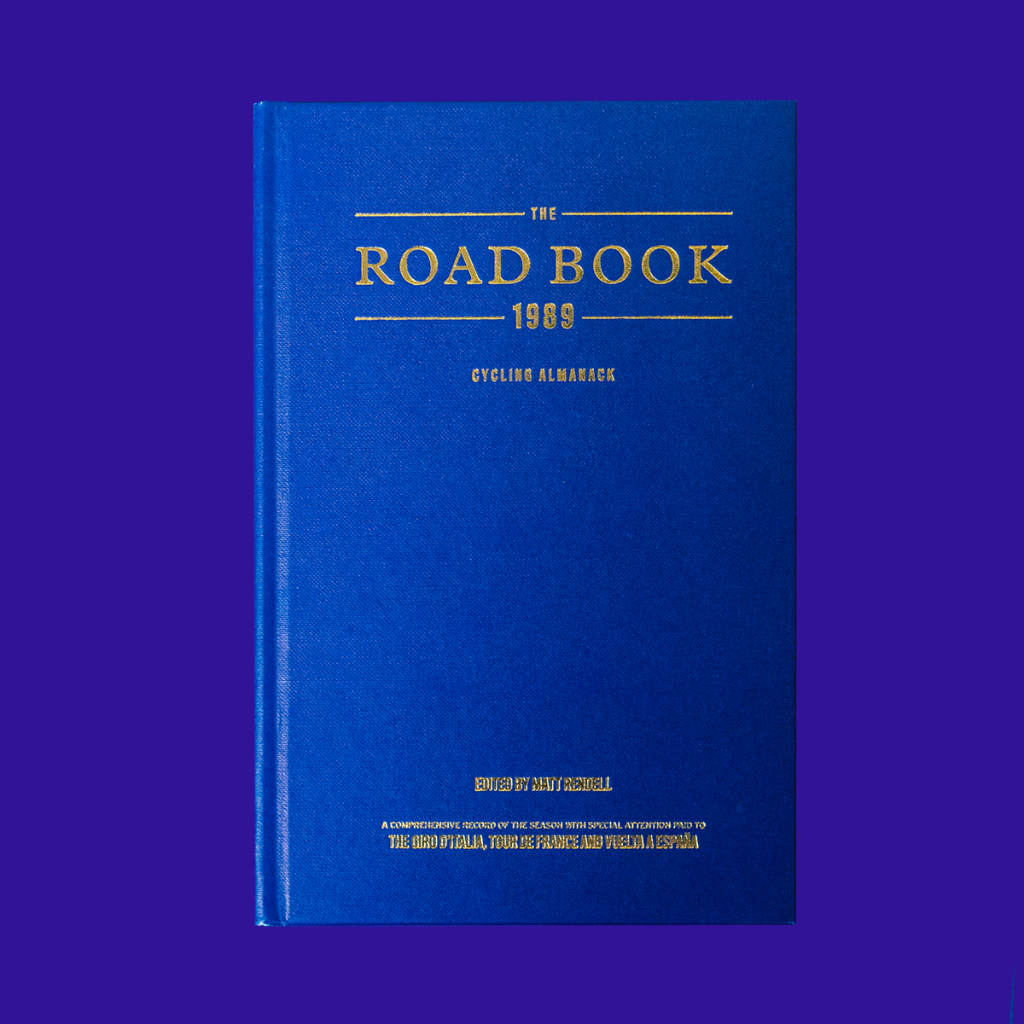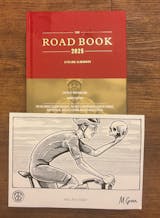Extract from The Road Book 2018. It was the re-emergence of the great Marianne Vos as a winning machine that characterised the late summer, with wins at the BeNe Ladies Tour and the Crescent Vårgårda before a clean sweep of stages and jerseys at the Ladies Tour of Norway. Vos then climbed off to concentrate once again on cyclocross, and continued her winning form. This greatest female rider of all time has contributed to The Road Book, and her thoughts, in conversation with the Guardian’s Helen Pidd, are contained within these pages as she details the lowest ebb of her remarkable career and points to a brighter future.
A lot of people thought I was finished. So did I, sometimes, on the hopeless days in 2015 when I needed 24 hours’ rest if I had just been out riding for an hour. Not even on my race bike: I couldn’t face putting my leg over the crossbar. It was too depressing. For much of that year the only bike you’d have seen me on in Babyloniënbroek, where I live, was my townie bike, a real sit-up-and-beg Dutch number with a basket on the front and a coaster brake.
I knew something was wrong that May when I came second in a home race – the one-day 7-Dorpenomloop Aalburg. I was satisfied with second, even though I had won that race six out of eight times in its history, but I felt terrible. Shortly afterwards I went on a national training camp. You couldn’t even call what I did training. Everyone was saying ‘maybe it’s mental?’ and I started to doubt myself. Others asked if maybe I just couldn’t take it any more, that I couldn’t suffer like I used to. I considered that but I soon realised I was cool with suffering. It was one of my specialities. I just knew I didn’t feel right and it wasn’t just the hamstring injury that had been causing problems on and off for a few years.
Eventually I was diagnosed with ‘non-functional overreaching’, which is a fancy way of saying that maybe I had overtrained. Apparently my body couldn’t handle the effort I was putting in, even if I was putting in less effort than ever. In June 2015 I agreed to take six months off. It gave time not just for my body to rest but for me to learn about myself.
It was hard. For the first time since I was a little kid, I wasn’t Marianne the Cyclist. So who was I? All my adult life and even before I was an adult I had been living on my results. I was only 15 when I became national junior road and mountain bike champion, 19 when I turned pro. I’d started a degree in biomedical science when I was 18 but I became world champion both on the road and in cyclocross in my first year at university, so I dropped out. Racing was all I really knew.
Then suddenly there were no results, just medical tests. I wasn’t sure who I was any more. There was a lot of soul-searching. I think I learned more about myself in six months than I had in the previous six glorious years of rainbow stripes and gold medals.
I wasn’t depressed but there were lows, for sure. I needed my friends and family a lot. The pro life doesn’t usually leave much time for relationships of any kind, so I enjoyed actually being able to be present. I went to birthday parties I had missed for a decade and was able to savour a piece of cake instead of an energy drink. Suddenly I had time to actually find out what was going on with the people I care about. What I didn’t do was let myself go. There was no partying all night long or any boozy binges. If anything, I went to bed earlier. I’m actually a bit of a night owl normally, but during that period I was tucked up early. I wanted to do everything I could to get better.
Quite a few people suggested I had done too much too young. Maybe that’s true. There was no training manual for a young cyclist who races on the road and track as well as doing cyclocross and mountain bike competitions at the highest level. But I don’t regret any of it. During those months when I could barely turn the pedals, I realised I wouldn’t change a thing.
What I learned was that it’s not just about the destination but about how you get there too. It sounds like a cliché, but before I got injured it really was all about winning. Everything else was incidental – just steps up to the top of the podium. For so long, cycling had been my daily routine and suddenly it was taken from me so I had to find joy in other things. I got more interested in other people rather than just thinking about myself – I enjoyed having the time for daily interactions with neighbours or at the supermarket. Normally I just zip in and out with no time for small talk because I’m either training or resting. It was fun finding out what normal people had to say. I don’t think you need to be egotistical to be a top cyclist but you need to be egocentric to have the confidence to make the best decisions for yourself. As a pro cyclist, you are not the best companion.
During that period people always asked me if I had lost my love of cycling. Had I burned out? Lost the passion? Absolutely not. I still loved riding a bike, basket or not. It says on my Twitter bio that I am a ‘full-time hobby cyclist’ and that’s still how I feel. Ever since I was a kid I have loved being outdoors riding my bike. It still feels like a hobby, even if it is my job. I realised I missed the game of cycling. I resolved to win again, first by having the best recovery I could. I went hard on recovering: early nights, regular massage, exercises to keep my body strong. I went for walks, swam, pootled around on my townie bike.
I knew I didn’t want to quit. I was determined not to end my career injured. But I had to be pragmatic in case I didn’t make a full recovery. I started a coaching course, figuring I had learned a lot in my career that I could pass on to the next generation. I actually only finished the course this year because bike racing got in the way again. I was back on the start line for my first race post-injury in March 2016, the Drentse Acht van Westerveld spring Classic at home in Holland. If people weren’t happy to have me back they didn’t show it. I got an unforgettable welcome from the peloton; everyone was so kind. I came tenth and even ended up in a break with a teammate – I didn’t expect to be able to do something but I was so excited to be back that it just happened.
That year all I wanted to do was qualify for the Olympics. I knew I wasn’t going to be able to retain my title from London, when I won the road race ahead of Lizzie Armitstead, as she was then. There was a certain expectation that I’d pull it out of the bag and take gold again but I knew I just wasn’t good enough. Actually I didn’t mind. I just wanted to go to Rio, to ride for the Netherlands and see how I could help my teammates. I rode for Annemiek van Vleuten until she crashed, and of course Anna van der Breggen, who won the sprint on the Copacabana. If you ride for the Netherlands there is always going to be a lot of competition. And anyway, cycling is a team sport. If the team wins, I win. I don’t have to be the one to cross the line first. If I add something to a teammate’s victory, if I help in some way, then I’m happy.
Of course, it was new for me taking any sort of domestique role. Before I was injured I didn’t have to ask if I wanted to go for a stage or a sprint. I just did it. Now I’ve learned to communicate a little better what I want to do. My teammates aren’t mind-readers, I’ve learned. I get genuine pleasure from helping them. One of my favourite races this year was the Women’s Tour in Britain, when my team, Waowdeals, decided that I would be joint leader with Dani Rowe, who was on home turf. I ended up second, with Dani third and me with the sprint jersey. Neither of us had the legs to beat Coryn Rivera, who won the GC. I really like Dani. We have quite a bit in common. After winning gold on the track in London in 2012 she had a horrible accident and was off the bike for months. Now she’s one of the best riders in the peloton and is getting back on podiums.
I think I have probably become a better teammate but one thing hasn’t changed: I still hate losing. Never play Monopoly with me. I can’t take it if I don’t win so no one likes playing with me any more. Maybe you have to be a bad loser to find the drive to win a race but I have never taken it very well. I can handle it if I’m beaten by a better woman, but if I lose because I have made a mistake, I can’t stand it. I race by emotion. As soon as we pass the flamme rouge there’s nothing more important for me than crossing the line first. The difference for me now, aged 31, is that I move on quicker in defeat. I still hate the feeling but I’m better at putting it into perspective. Like at the Tour of Flanders this year, which I won in 2013. The Dutchies were all on the podium – van der Breggen, van Vleuten and Amy Pieters. I was 35th. I was nowhere, but I knew I wasn’t on top form, having gone into it with a lung infection. In Liège–Bastogne–Liège I came 56th, though to be fair I did break my collarbone halfway through.
After the Women’s Tour was the Giro. I wasn’t the leader. Sabrina Stultiens, another Dutch rider, was going for GC and it was my job to help her in certain parts of the race. It was nice to just work for the team. I was aiming for a stage win so I was delighted when I took Stage 8. At that point I was the only sprinter on our team, so if it came down to a sprint then I really had to go for it if I was feeling good.
I liked not being in the spotlight, not having everyone watch my every move like when I was world champion.That said, I didn’t actually mind it when I was number one. I never really feel too much pressure from anyone except myself. I want to do everything perfectly – whether it’s a local crit or a women’s WorldTour race – and if I don’t, I am unhappy. If you are a marked woman then you just need really good team tactics. We had to be clever because we knew people would always be trying to catch our wheels. I think it’s an honour to be in that position. I never saw it as irritating. It just means you have to ride harder to win. And I like to ride hard.
For me, things really clicked into place in Sweden in August, when I won the Crescent Vårgårda. It’s a one-day race that probably doesn’t really add anything to my palmarès, but I will never forget it. Suddenly I felt good again. Up until then, even though I had been winning races here and there, it never felt easy. We have a saying in Dutch: ‘I had to walk on my tiptoes’ to get to the finish first, really calculating every pedal stroke. For a few years after my enforced break, cycling no longer felt so intuitive to me. But somewhere along that 141km course in Vårgårda I realised I was back in the game. We knew from the start that it was going to be hard to make a breakaway so our plan was just to keep me in a good position in the bunch and for me to conserve my energy for a sprint. Dani Rowe helped and with a few hundred metres to go, she put me in the Sunweb train
A few days later came the Tour of Norway. I felt even better, unreal. I won every stage, taking both the GC and the sprint jerseys. It was a bit surreal. It was a very strong field. All the people who had risen to the top in the years when I was not at my best were there. Coming back, I didn’t fear them. I have never feared anyone. I like having the competition. I prefer a battle to the line rather than a 40km solo breakaway.The harder the battle, the better the feeling. There’s more satisfaction.
It was the same at the cyclocross World Cup in Waterloo, Wisconsin, in September. That was my first cyclocross victory after an awful season last year. All the way around the course I was trading the lead with Ellen Noble of Trek Factory Racing CX, with not more than a bike length separating us. I kept pulling ahead, then she would attack and overtake me. When the final bell rang we were still together and I knew I would have to work really hard to drop her. I saw my chance on the last uphill section, just before the finish. It was really only in the last few seconds when I had a chance to make the perfect move and it was so satisfying to win like that, totally destroyed from the effort.
In the 12 years since I stepped up to the elite level the field has deepened so much. Of course, we still have a long way to go but everything has got better: the tempo, the tactics, the structure of the teams. I am very happy that the UCI announced in September that it was going to professionalise women’s cycling, introducing minimum salaries and a two-tier system. Having the best riders in the best races is great for riders, and more interesting for fans too. Until now, as a woman you were either a recreational cyclist or a pro. There was nothing in between. I am really pleased about the minimum salaries too. Throughout my career I have ridden alongside women who weren’t being paid properly. It’s going to require every team to increase its budget, though, and to do that they will have to see a return on their investment. As ever, that means we need more televised races, more media coverage. The UCI does put all sorts of rules in place around what has to be broadcast, but we need more exposure to get our sponsors’ names out there.
Looking ahead to the future, I don’t think I will win another rainbow jersey. But that is not to say I won’t be working very hard to become world champion again. Alejandro Valverde was 38 when he won the road race this year. I am only 31 – and I have at least two disciplines to try.



